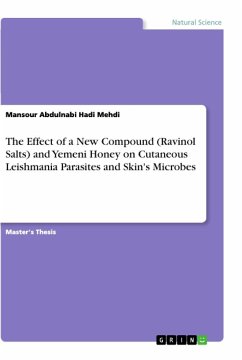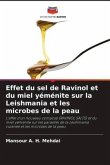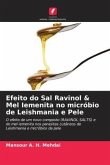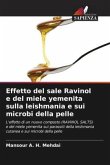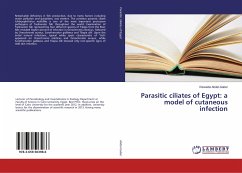Master's Thesis from the year 2013 in the subject Biology - Zoology, grade: Excellent, , language: English, abstract: Cutaneous leishmaniasis is still a major health problem especially in countries with low socioeconomic development. Although pentavalent antimony compounds are still the expensive, standard, basic and first line of treatment in Yemen. The aim of study: Detection of Leishmania spp patients. Detection of other microbes. Study the antiseptic effect of different concentrations of the 2-ethoxy-6,9-diamino acridinium enzensulphohydrazidooxalyl glycinate and Yemeni Honey (RIV) on a particular strains of microbes in vitro and Leishmania parasite in vivo. The samples have been collected at the laboratory of the Faculty of Education-Radfan, Aden University. The Cutaneous Leishmaniasis diagnosed clinically parasitology, hematology, and culturing the parasites and biochemically. Moreover, the microbes which are found around the lesions were diagnosed by microscopic, culture and biochemical tests. The venous blood have been collected from 8 patients and 5 controls. The susceptibility of the microbes for some antibiotic found in our pharmacies and the new compound 2-ethoxy-6,9-diamino acridinium benzensulphohydrazidooxalyl glycinate have been studied. Besides, the effect of Yemeni Honey (Sider and Summer) has been studied. Moreover, the animals have been injected with cutaneous leishmaniasis parasite have been studied. The study has revealed that the age of patients is between 12- 68 years and 4 of them (50%) are males and the other 4(50%) are females. Also the study has showed that most of the patients are young adults live in small villages. The study has showed that the lesions of 62.5% of the cutaneous leishmaniasis patients are localized on the face, while the lesions of 20% of the patients are in the hands and one case on leg. Besides, it has noticed that all the inoculated rabbits after two-three weeks could develop different types of lesions ranging from nodules to open ulcerated lesions. The smears taken from the patients have showed that are intracellular amastigote, inflammatory cells, lymphocytes, and plasma cells. The amastigote has been found intracellular as well as extracellular.
Hinweis: Dieser Artikel kann nur an eine deutsche Lieferadresse ausgeliefert werden.
Hinweis: Dieser Artikel kann nur an eine deutsche Lieferadresse ausgeliefert werden.

